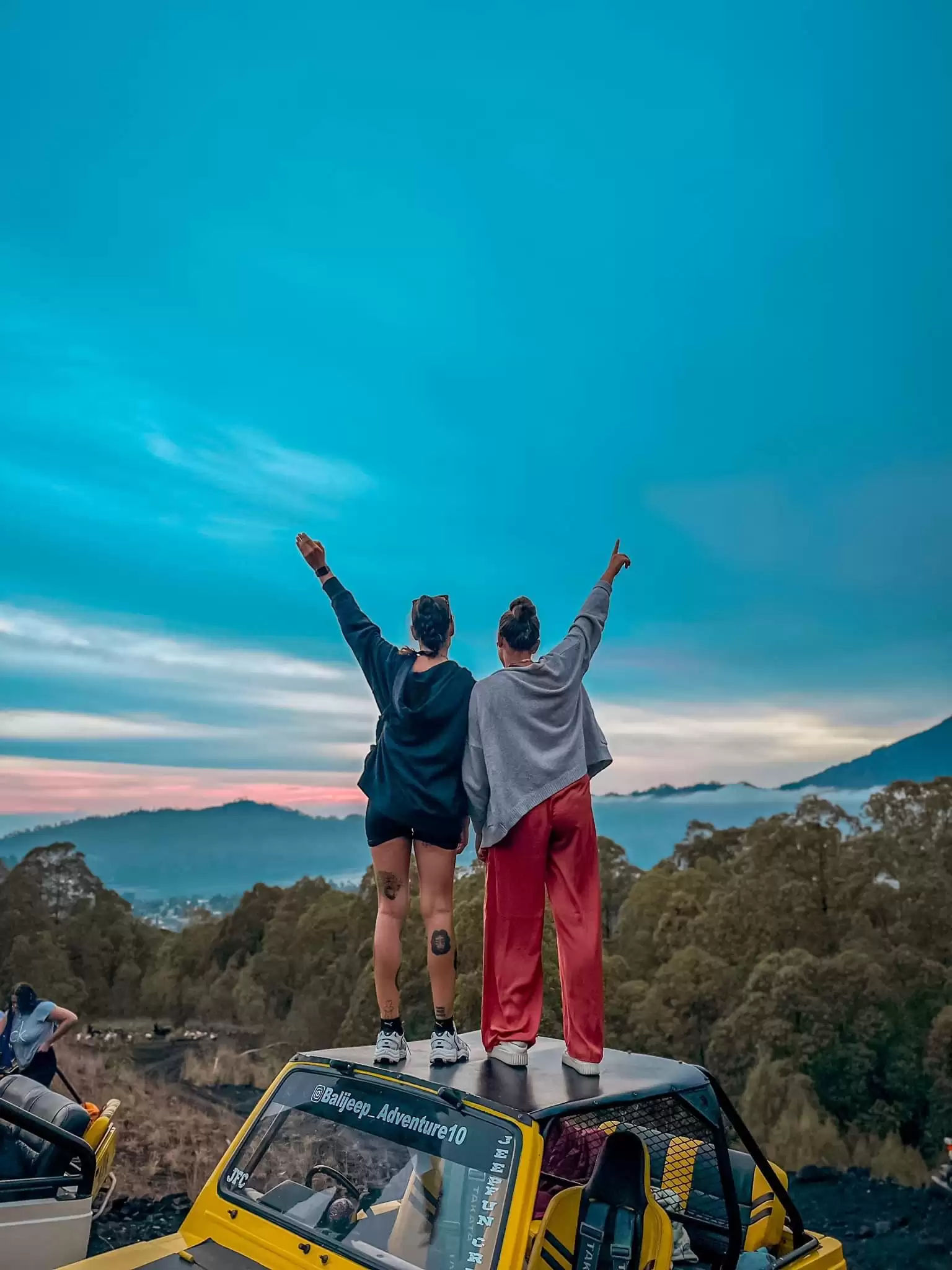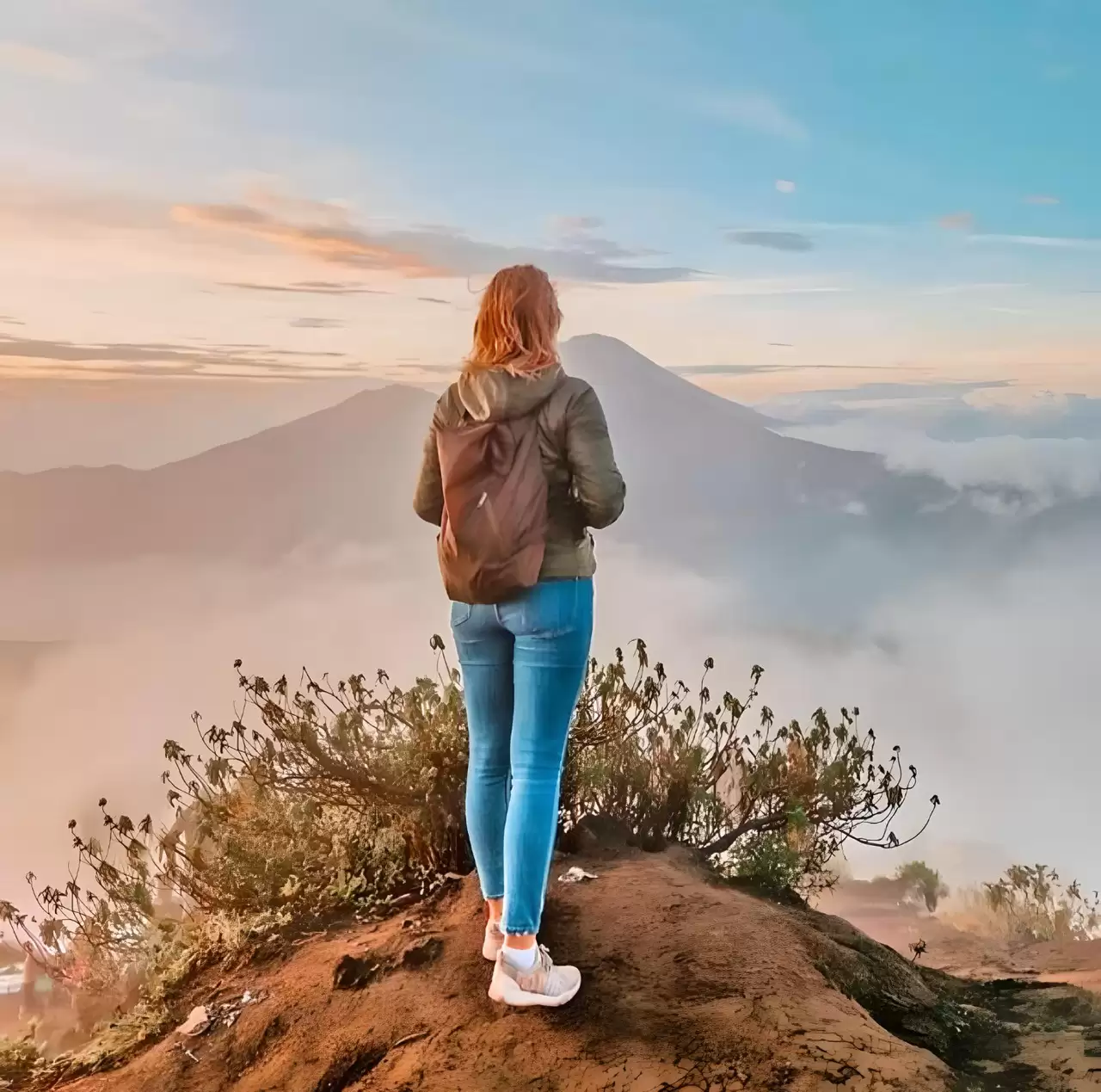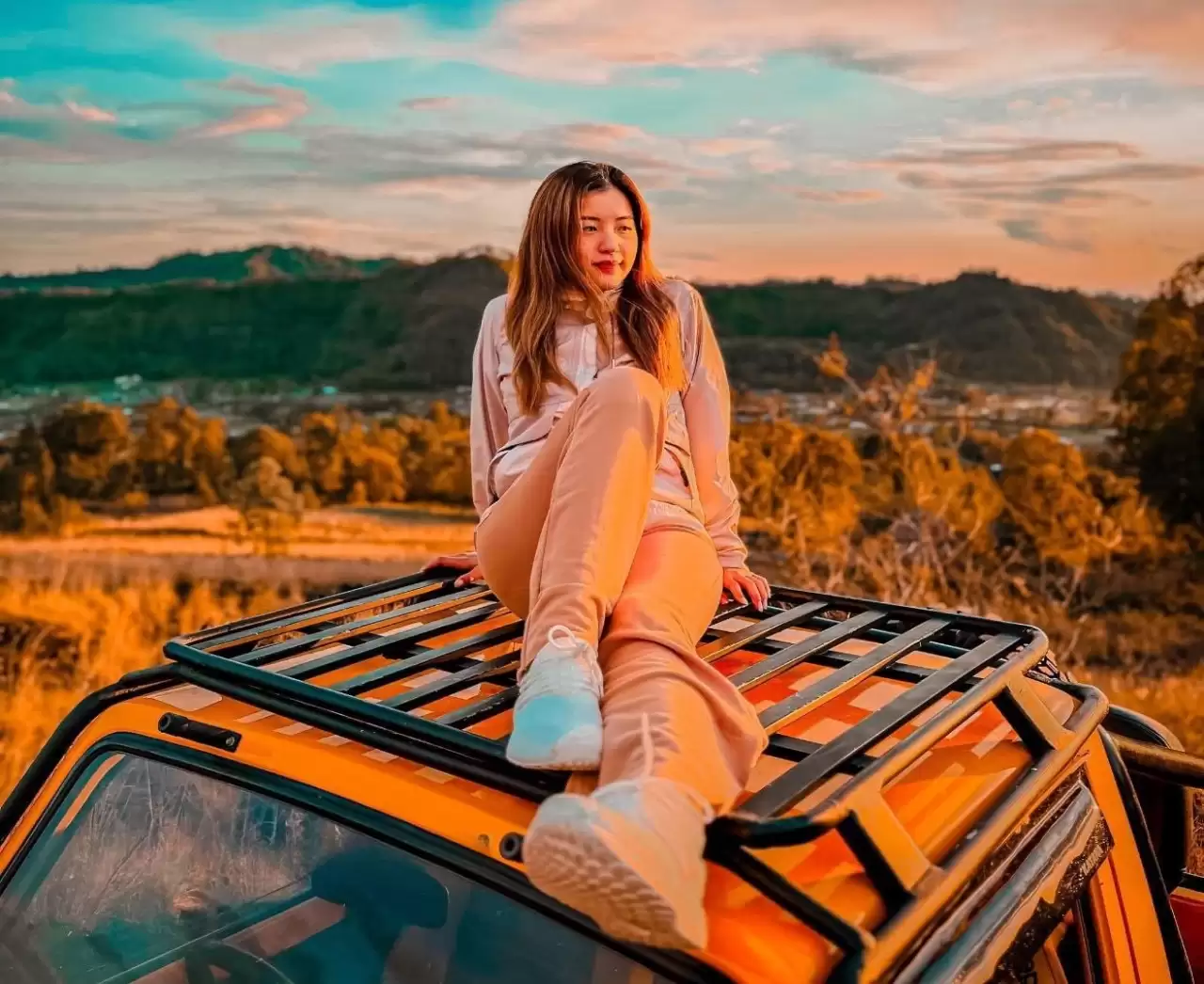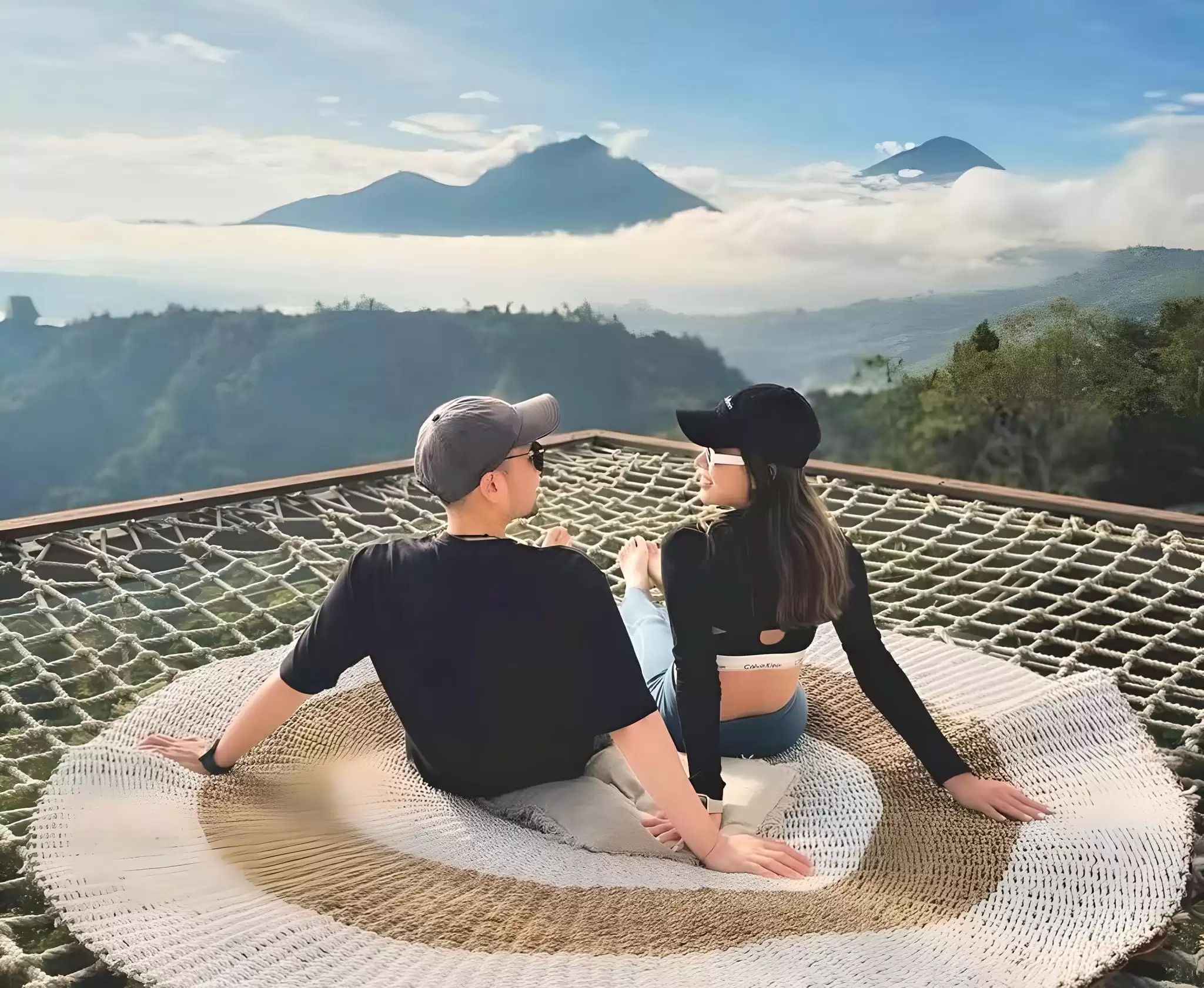Secrets for an Unforgettable Mount Batur Sunrise Hike

Best Seasons for Clear Visibility and Stunning Colours
If you’re hoping to catch that picture-perfect Mount Batur sunrise hike—clear skies, golden hues, and views that stretch all the way to Lombok—timing your trek with the seasons is key. The best time to hike Mount Batur is during Bali’s dry season, from April to October.
During these months, you're more likely to get crisp, cloud-free mornings and vibrant sunrise colours—from deep oranges and fiery reds to soft purples lighting up the sky. Visibility is usually at its best, so you’ll have a higher chance of catching sweeping views over Lake Batur, Mount Agung, and even Mount Rinjani in the distance on extra clear days.
November to March is Bali’s rainy season. It can still surprise you with clear mornings and dramatic skies, but visibility is hit or miss. Morning mist can either block the view completely or create that incredible “floating above the clouds” effect. It’s more of a gamble, but when it hits—wow.
Pro tip: Try to hike around the new moon if you want a sky full of stars on your way up. A starlit trail adds even more magic to the experience before the sunrise steals the show.
Ideal Starting Times from Different Locations
If you're planning to catch Mount Batur’s iconic sunrise, timing your departure is everything. The goal is to reach the starting point of the hike or jeep ride by around 3:30–4:00am, giving you enough time to climb (or drive) up and settle in before first light hits the sky.
Here’s a quick guide to ideal starting times based on where you're staying:
- Ubud: Around 2:30am – Ubud is one of the closest major towns to Mount Batur, so your drive is about 1 to 1.5 hours depending on traffic (or lack of it at that time!).
- Canggu: Around 1:30am – This area is further west, and the drive can take 2 to 2.5 hours, so an earlier start is a must.
- Seminyak / Kuta: Around 1:30am – Similar to Canggu, plan for at least a 2-hour drive.
- Sanur: Around 2:00am – Slightly closer, around 1.5 to 2 hours to reach the base.
- Nusa Dua / Jimbaran: Around 1:00am – This is one of the furthest areas, so expect a longer drive (up to 2.5 hours).
How Weather Patterns Affect Your Viewing Experience
Mount Batur’s sunrise is seriously stunning—but the weather can make or break the view. Knowing what to expect with Bali’s shifting climate helps you plan your trip for the best possible experience (and set realistic expectations if the forecast isn’t perfect).
Dry Season (April to October)
This is the safest bet for clear skies and brilliant sunrise colours. Mornings are typically crisp and dry, meaning unobstructed views over Lake Batur, Mount Agung, and even Mount Rinjani if the sky’s really clear. Expect cooler temps before dawn—around 15°C (59°F)—so layers are your best friend.
Rainy Season (November to March)
It’s a mixed bag. Some mornings gift you with dramatic skies, low-lying mist, and moody clouds—which can actually be stunning in photos. But there's also a higher chance the summit will be covered in thick cloud or fog, leaving visibility pretty limited. That said, early mornings are often drier than afternoons, so if you’re visiting in rainy season, you still have a shot.
Mist & Cloud Cover
Even in dry season, it’s not uncommon to get morning mist rolling through the valley below. When that happens, you might find yourself standing above the clouds—which feels surreal and looks like something out of a dream. Just note that clouds can shift quickly, so patience often pays off.
Essential Gear and Preparations
Must-Have Clothing for Changing Mountain Temperatures
Mount Batur may be in tropical Bali, but don’t let that fool you—temperatures at the summit before sunrise can surprise you. It’s chilly before dawn, often dropping to around 15°C (59°F), and then warms up quickly as the sun rises. Dressing smartly is key to staying comfortable for the entire adventure.
Here’s what you’ll want to wear and pack:
- Lightweight jacket or fleece: Essential for the pre-sunrise chill. Go for something easy to pack away once you warm up.
- Breathable base layers: A light long-sleeve or t-shirt made from quick-dry fabric keeps you comfy without overheating.
- Comfortable trousers or leggings: Skip the shorts—it’s cold at the start and you'll want something to protect your legs if you're trekking.
- Good walking shoes or trainers: The trails can be rocky or slippery with loose gravel. Proper grip makes a big difference, even if you’re on a jeep tour.
- Buff, scarf or beanie: Especially nice to have if it's breezy up top. Keeping your head or neck warm makes chilly mornings far more pleasant.
- Sunglasses & layers you can remove: Once that sun comes up, you’ll warm up fast—so dress in layers you can peel off easily.
Recommended Footwear for Volcanic Terrain
Whether you’re hiking up Mount Batur or joining a jeep tour with some light walking, choosing the right shoes can make a big difference. The terrain is made up of loose volcanic gravel, uneven rock, and dusty slopes—so your flip-flops and fashion trainers won’t cut it here.
Here’s what to wear on your feet for a safe and comfy trek:
- Trail running shoes or hiking shoes: These are ideal—comfortable, grippy, and built for uneven, rocky paths. Low-cut hiking shoes are perfect if you want something lightweight but still supportive.
- Sturdy trainers with good grip: If you don’t have hiking shoes, firm-soled athletic trainers will do the trick. Just make sure they’re not too worn out and have reliable traction.
- Avoid sandals, smooth-soled shoes, or anything open-toed: The gravel is sharp, the ground is unstable, and your feet will thank you later.
Camera Equipment Tips for Dawn Photography
Capturing the golden moment at Mount Batur’s summit is a must—but shooting at dawn has its own set of challenges. From low light to temperature changes, a bit of planning goes a long way to make sure your sunrise photos turn out as epic as the view.
Here’s what to bring and how to get the most out of your gear:
- Camera with manual settings: A DSLR or mirrorless camera is ideal so you can adjust ISO, shutter speed, and aperture as the light changes quickly. But even modern phone cameras can capture stunning shots—just know their limits in low light.
- Tripod (even a mini one): Super useful for low-light shots before sunrise. A lightweight travel tripod or Joby GorillaPod lets you take sharper photos without blur from shaky hands.
- Extra batteries: Cold early mornings drain batteries fast. Always pack a fully charged spare or two—especially if you're shooting with a DSLR.
- Wide-angle lens: Perfect for capturing the sweeping views of the crater, lake, and sunrise. A 16–35mm lens works great on most setups.
- Microfibre cloth or lens wipes: The summit can get misty or dusty, so keep your lens clean for crystal-clear shots.
- Phone with night mode: If you’re using your smartphone, take advantage of night mode or long exposure settings for pre-sunrise shots. You can even prop it on a rock for stability.





